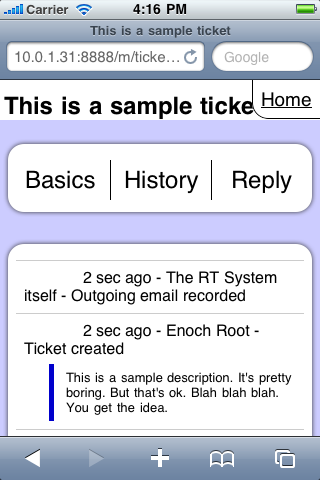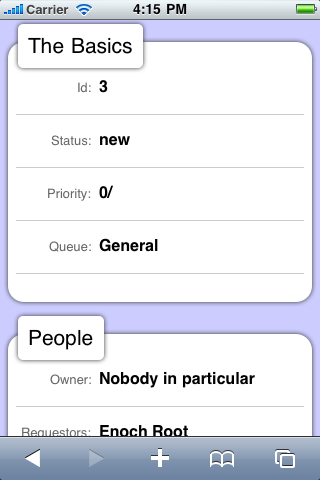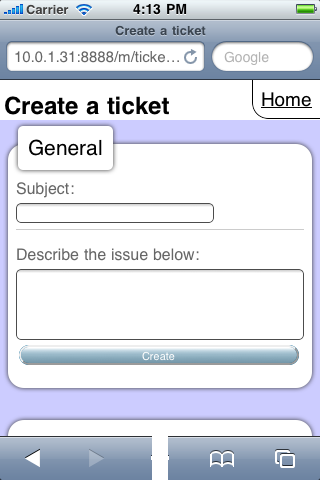Für Request Tracker, ein beliebtes und technisch sehr mächtiges Ticketsystem gibt es ab sofort ein spezielles Webinterface für mobile Geräte. Die Erweiterung für den RT kann zusätzlich zum normalen Webinterface als Plugin installiert werden und erkennt mobile Geräte wie iPhone, Android oder Blackberry automatisch. Diese werden anschließend auf eine, speziell für kleine Displays optimierte Mobilversion des Webinterface weitergeleitet. Natürlich kann man trotzdem jederzeit auf das normale Interface zurück wechseln. Aktuell bietet das Mobile Interface des RT die folgenden Features:
- Normale oder externe Authentifizierung
- Erstellung von Tickets
- Anzeige von Tickets inkl. Bearbeitungshistorie
- Download von Ticket-Attachments
- Suche im Ticketbestand und Anzeige von gespeicherten Suchanfragen





















